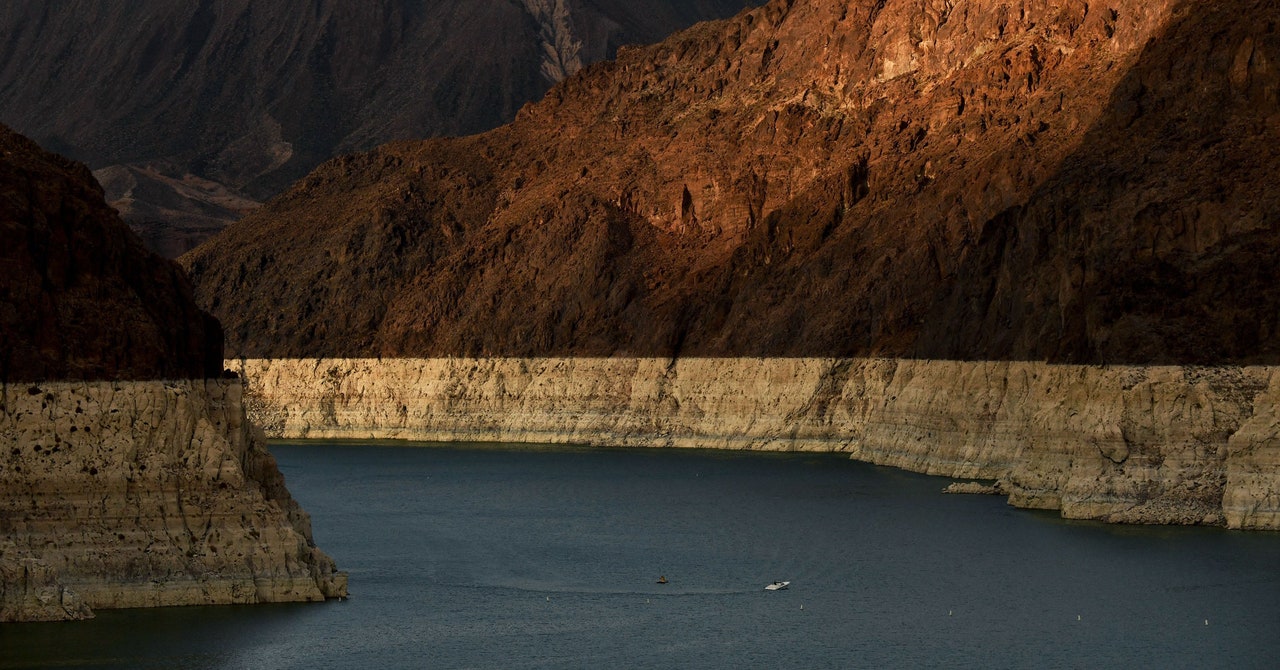
Officials at the federal Bureau of Reclamation reported this month that the West’s two big reservoirs—Lake Mead in Nevada and Arizona and Lake Powell in Utah and Colorado—are deteriorating toward “dead pool” status, where stored water is at such a low level it can’t spin the massive hydroelectric power generators buried in the dams. As a result, the agency has begun releasing upstream water from Flaming Gorge Reservoir in Wyoming and drawing from reservoirs in New Mexico and Colorado. They hope it will stop Lake Powell from dropping low enough to threaten Glen Canyon Dam’s hydropower-generating capability.
Later this summer, the agency is expected to announce the first-ever federal water restrictions for Arizona, Nevada, and California beginning in January 2022, according to reporting from the Associated Press.
During the last big drought that struck California, between 2012 and 2015, the state was able to draw on hydropower electricity supplies from the Pacific Northwest to make up for its own shortfalls. But that might be tougher this year because that region is also experiencing a crippling dry spell that has spawned out-of-control wildfires and damaged crops.
On July 18, Washington’s topsoil moisture was rated 98 percent “very short to short”—the driest on record since the beginning of the 21st century, according to the latest Drought Monitor report. Washington also led the country in “very poor” to “poor” soil conditions for rangeland and pastures, spring wheat, and barley, while similar dried-out crop conditions were reported in Montana, Arizona, Oregon, Utah, Nevada, and Wyoming.
Because of its snowpack and surface water from Canada, the US Northwest has water to meet its own electricity and irrigation demands, but not much extra, according to Doug Johnson, a spokesperson for the Bonneville Power Administration, which produces power for 8 western states from 31 federal dams and one nuclear plant. “It is a below-average water year, so we want to make sure everyone is focusing on their own set-up and not counting on a surplus,” Johnson said. “It’s not something that people can rely on. There will be some additional energy, but it depends from day to day and week to week.”
Last August, California suffered rolling power blackouts across the state after temperatures spiked, along with demand for air conditioning. The crisis was blamed on poor planning by the state’s utilities, as well as the worsening effects of climate change, which experts say has driven high temperatures and played a role in the drought. The perfect storm of low water supplies, extreme heat, and surging power demand will likely bend, if not break, the electrical grid in some areas, according to Jordan Kern, an assistant professor of forestry and environmental resources at North Carolina State University, who studies water, power, and climate change. In the coming weeks “if you get 115- or 120-degree heat in places out west,” Kern says, “especially in California where everyone uses air-conditioning, then they will run out of electricity.”
In the past, utilities like PG&E have been denounced for management failures related to blackouts, such as failing to tell customers that outages to reduce demand were imminent, and relying on power from plants that had been shut down. This year, the same utility announced plans last week to bury 10,000 miles of power lines to reduce the risk of wildfires igniting from sparking power lines.
Kern notes that climate change has made temperatures higher and worsened the effects of the drought. “One way to determine whether it’s a bad summer or there’s something different about the climate is to look at what’s happened in the past, ” Kern says. “If you went back 50 years and looked at summertime temperatures and plotted them in a bell curve, and then plotted this year, this year would be off the charts.”


